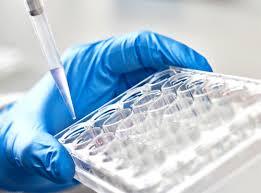Antibacterial activity of Manuka honey and its components: An overview

https://www.ncbi.nlm.nih.gov/pmc/articles/PMC6613335/
Johnston M, McBride M, Dahiya D, Owusu-Apenten R, Nigam PS. Antibacterial activity of Manuka honey and its components: An overview. AIMS Microbiol. 2018 Nov 27;4(4):655-664. doi: 10.3934/microbiol.2018.4.655. PMID: 31294240; PMCID: PMC6613335.
Abstract
The importance of honey for medicinal purposes is well documented in some of the world's oldest literature. Honey is well known and studied for its antimicrobial properties. The medicinal properties in honey originate from the floral source used by bees. Manuka honey is a dark monofloral honey rich in phenolic content, and currently it is gaining much attention for its antimicrobial activity. Researchers have found that honey is effective against a wide range of pathogens. The antibacterial potency of Manuka honey was found to be related to the Unique Manuka Factor (UMF) rating, which is correlated with the methylglyoxal and total phenols content. It is reported that different types of Manuka honey have differing effects and Gram-negative bacteria are more resistant than Gram-positive bacteria. Bacterial resistance to honey as antimicrobial agent has yet to be identified, possibly due to the presence of a complex mixture of methylglyoxal and other components. Honey is also reported to alter a bacterium's shape and size through septal ring alteration, which affects cell morphology and growth. Research has shown that Manuka honey of different UMF values has medicinal properties of interest and it can be beneficial when used as a combination treatment with other antimicrobial agents.
Keywords: Manuka honey, infection, bacteria, antibacterial, UMF, methylglyoxal, bacterial resistance

1. Introduction
2. Bacterial infections
3. Honey's use in alternative therapy
3.1. Unique Manuka Factor honey
3.2. Antibacterial activity of Manuka honey
3.2.1. Effect of honey on bacterial growth and cell morphology
3.2.2. Effect of honey on biofilms
3.2.3. Effect of factors on antibacterial property of honey
3.2.4. Honey's use for resistant bacteria and biofilms
3.2.5. Synergistic activities using honey with conventional-antibiotics
4. Conclusions
The review of selected published work provides a conclusive information that the potential importance of honey for medicinal purposes cannot be underestimated. The research data has confirmed that Manuka honey's antibacterial activity, in comparison to non-Manuka honey, is due to a higher phenolic and methylglyoxal content. Manuka honey can be safely used as an alternative natural antibiotic, which exerts a stimulating effect on macrophages to release mediators needed for tissue healing and reducing microbial infections. Unique Manuka Factor (UMF), which depends on methylglyoxal content is also important for honey's antibacterial activity. Other active components include hydrogen peroxide, acidic pH level, hyper-osmolality effect and bee defensin-1 etc. Finally, the conclusion is that honey is a natural and safe antibiotic, since no literature published has reported bacterial resistance for honey, which is attributed to the complexity of honey components working solely or in a synergistic manner with other components.Therefore, based on above conclusion it is an interesting aspect for further research that the synergistic combination of Manuka honey of different UMF values with commercial antibiotics could be studied to establish an alternative approach for the treatment of antibiotic-resistant microorganisms.